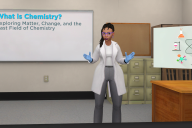You have /5 articles left.
Sign up for a free account or log in.

Istockphoto.com/PeskyMonkey
A little over a year ago, Apple announced in splashy fashion -- if not as splashy as an iPhone release -- that the company would deliver a curriculum for its Swift coding language to 30 community colleges. The news, coupled with the announcement of a high-profile partnership with Ohio State University, struck observers as a sign that the company was ramping up its foray into higher education.
Those predictions appear to have come true. The company has added in the last year at least four community colleges to the program. At many of the original community colleges, meanwhile, Swift has taken root to varying degrees, as institutions continue to figure out how best to provide students with technical skills that will serve them in the work force.
Institutions added to the partnership since it was announced last August include Shelton State Community College, in Alabama, College of Southern Nevada, Carroll Community College, in Maryland, and Sacramento City College, according to an Apple spokesperson. The company declined to provide additional details on the project’s impact or the company’s future higher ed plans.
In the past year, Mesa Community College has enrolled close to 100 students in an iOS app development microcertificate program. Sixteen students, including recent high school graduates, adults looking to switch careers and retirees seeking new skills, graduated this past May, according to Linda Collins, chair of the institution’s business and information systems department.
Later this year, the institution will add an industry certification in iOS app development.
“When we talked to Apple before, they had said to us, ‘We really don’t need a lot more coders. What we need is more really good coders,’” Collins said. “Apple had put together the resources and the materials that met their expectations for what would make a good coder. Students love it.”
The nine-credit microcertificate leads into a certificate in programming, which in turn builds to an associate degree. Some students are continuing past the microcredential while others are content with that achievement, Collins said.
But the coding curriculum’s impact extends beyond those offerings, Collins said. Apple’s Everyone Can Code initiative inspired administrators to create an Information Technology Institute with “innovative course and program offerings” on topics like blockchain, mobile data repair and data analytics that students can complete in less than a year. Several of those courses will be offered at a new temporary space in Mesa near the city’s IT core, Collins said.
Each institution tailors its Apple’s curriculum offerings to meet specific needs. Skyline College in California has settled on offering the Swift coding course in the spring so that students preparing to transfer to four-year institutions have taken it recently as the culmination of their computer science studies. The institution also offers “summer experiences” to get students excited about app development, according to Andrea Vizenor, Skyline’s director of career and work-force programs.
“Apple is a great community, but it’s not just because it’s Apple. It’s holistically how are we best preparing students to be really walking into interviews and having language and skills that set them apart from other candidates,” Vizenor said.
Most community college representatives interviewed for this article said they’re in constant dialogue with Apple, though usually not on technical support issues.
“We just discuss technology and what’s out there,” Collins said. “It’s more of a group discussion about what we’d like to see and what’s going on.”
The company also offers additional resources and floats the possibility of partnerships in other curriculum areas like retail management, according to Vizenor.
Swift courses have been more popular at some institutions than others. Harrisburg Area Community College, in Pennsylvania, for instance, drew 11 students last fall for the introductory course but didn’t get enough enrollments to repeat the classes in the spring. The free online availability of open-source Swift materials might have discouraged some students from paying for courses, according to Abigail Peslis, director of corporate and business services in the institution’s Workforce Development and Continuing Division.
Peslis thinks the credit-bearing courses may end up being more popular than the noncredit work-force development courses that have been offered so far. But credit-bearing courses also take longer to develop, she said.
"It warrants a little bit more investigation, how to best utilize this programming, rather than offering it stand-alone as we did,” Peslis said. “Part of something bigger may be the better way to go.”
People who wanted to expand a skill set for an employer were more likely to take the first course but not the second, she said. IT associates already employed at a local company, on the other hand, stuck around for the second course.
The noncredit courses are on pause until the credit program gets off the ground, according to Peslis. Students are also more likely to be interested in that offering because they can apply financial aid to it, she said.
The program, while still developing, has attracted interest from two other institutions, which reached out to the Harrisburg institution for details on how it went and what lessons they learned.
“It sounds like everyone's still in an early stage of exploring,” Peslis said.
Apple's work with community colleges on coding began much earlier than last year. At Northwest Kansas Technical College, app development courses this year drew “a little bit of the material” from Apple, but the majority is developed in-house.
Local high schools offer students training in the basics of Swift, according to Jeremy Skrdlant, mobile apps instructor at Northwest Kansas, which means the community college has to offer programming courses that are slightly more advanced than what Apple has offered thus far.
“We’ve been programming iOS since 2011. It’s always been a pretty good program," Skrdlant said. "Students really enjoy it. It’s been good to us.”






